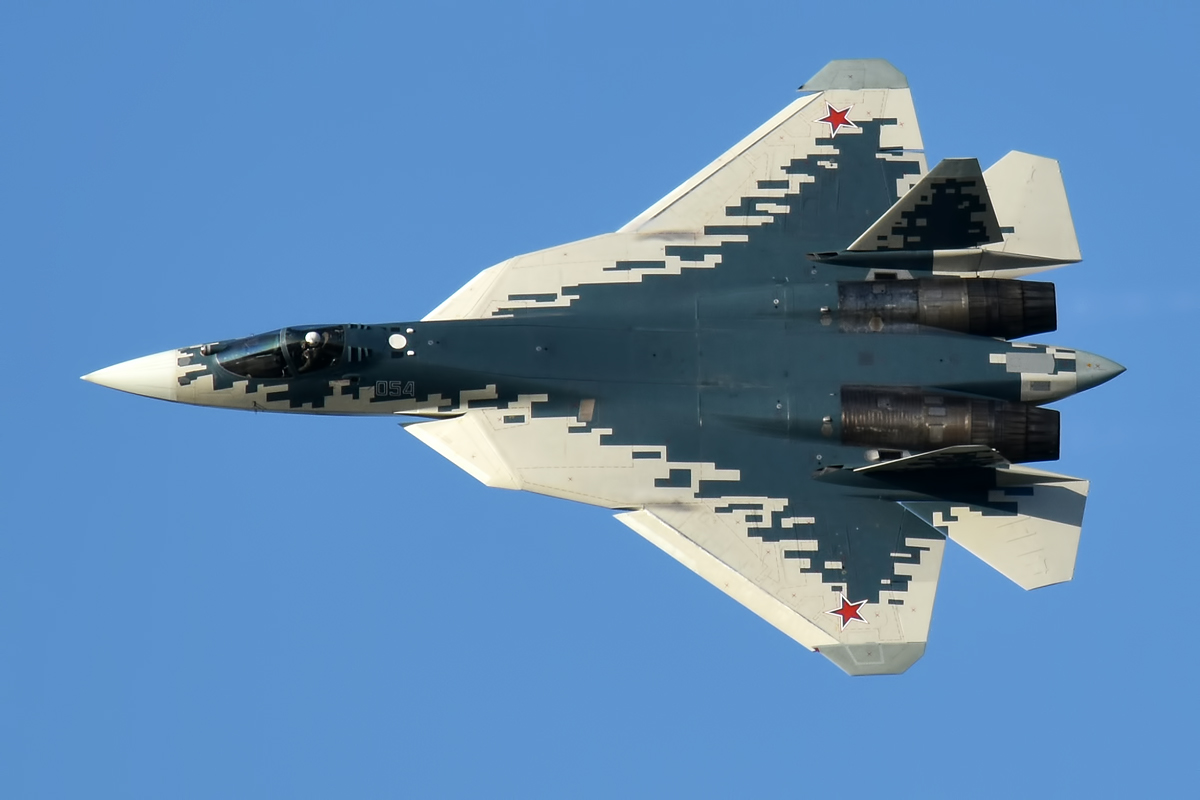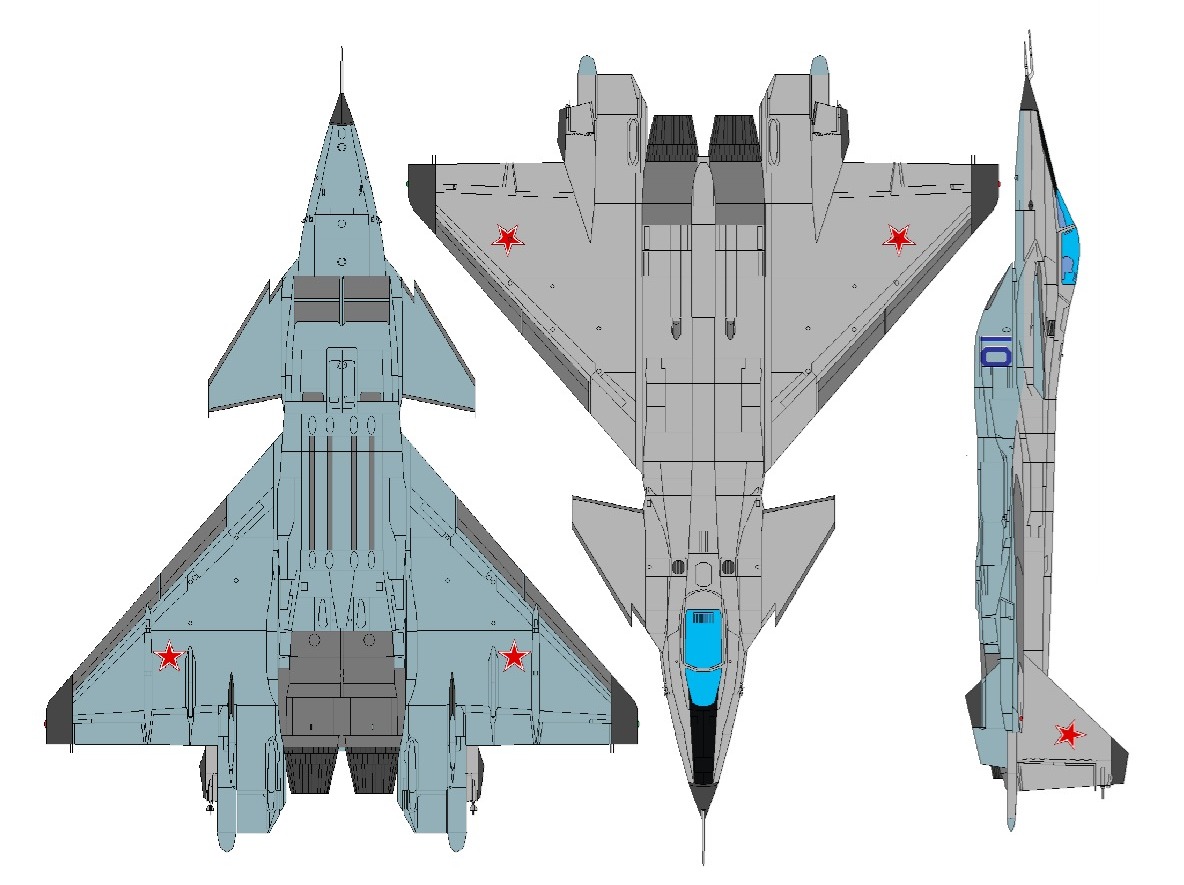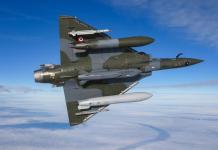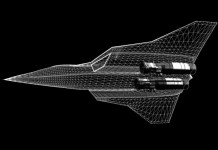The Su-57E has impressed India with its “beautiful technology.” Along with the aviation enthusiasts enthralled by the gravity-defying stunts of the Russian ‘Felon,’ Indian scientists are assessing the aircraft’s technology.
During the ongoing air show at Bengaluru Aero India 2025, Russia renewed its pitch to offer India co-production of the fifth-generation fighter.
Incidentally, India walked out of the joint Indo-Russian Fifth Generation Fighter Aircraft (FGFA) program in 2018, and in 2025, as the Indian Air Force (IAF) is scrambling to arrest the falling numbers of its fighter squadrons, it may have been like a missed opportunity.
Scientists from the Aeronautical Development Agency (ADA), which is developing India’s indigenous 5th-generation Advanced Medium Combat Aircraft (AMCA), have been flocking to the static display of the aircraft.
Talking to the EurAsian Times, one of the scientists said: “It is a beautiful piece of technology. Its rotatable fins and landing gear are especially impressive.”
Rosoboronexport, Russia’s state-owned defense exports company, restated its offer to partner with India for joint production of the Su-57E.
“Rosoboronexport, together with United Aircraft Corporation (UAC), proposes to localize FGFA aircraft in India. This production of the FGFA at the HAL (Hindustan Aeronautics Limited) plant might take place as early as 2025. It can be provided this year itself,” a representative of Rosoboronexport told the media.
The Su-57, Russia’s most advanced front-line aircraft, is produced at the Komsomolsk-on-Amur Aviation Plant in the Russian Far East. Despite being in development for nearly two decades, it is unlikely to be produced in huge numbers soon, as the invasion of Ukraine has put a great strain on the Russian economy.

The Russian representative further sweetened the deal by offering further developments to the Su-57E and giving critical technologies to boost the AMCA program.
“Additionally, Rosoboronexport offers technological development in terms of fifth-generation technologies comprising engine, Active Electronically Scanned Array (AESA) radars, optics, AI elements, software communication means, and air weapons that might also boost the Advanced Medium Combat Aircraft (AMCA) national program of India,” the representative added.
Taking a dig at the US, he said that India can manufacture these critical technologies without fearing sanctions.
“Manufacturing FGFA means manufacturing critical, crucial elements in India without a fear that tomorrow, something would not be delivered because of sanctions. There shall be no fears in terms of the potential threat of sanctions or a decision from above that some parts or components of the aircraft won’t be delivered to India,” the representative said.
The 5th-Gen Fighter That India Could Have
When India set on the quest for a fifth-generation fighter jet, it sought proposals from the Mikoyan and Sukhoi.
The aim was to develop a fifth-generation fighter jet to compete with the American F-22 Raptor and F-35 Lightning II. The project was also part of Russia’s efforts to modernize its air force and maintain its status as a leading military power.
Mikoyan, known for its MiG series of fighter jets, proposed the MiG 1.44 (also known as the MFI – Multifunctional Frontline Fighter).

The MiG 1.44 was designed to be a highly maneuverable aircraft with advanced avionics and stealth capabilities. India preferred the design.
“We liked the proposal of Mikoyan as it suited our requirements better. But it had asked for USD 5 billion at that time,” a former IAF official privy to the proposal told the EurAsian Times.
The MiG 1.44 made its first flight in 2000, but the program was eventually shelved due to a lack of resources and support as the Russian government also decided in favor of Sukhoi’s proposal.
You can read about MiG 1.44 here.
Sukhoi proposed the PAK FA (Prospective Airborne Complex of Frontline Aviation), later known as the Su-57. Sukhoi’s design focused on stealth, supercruise capability, advanced avionics, and multirole functionality. The Su-57 was intended to be a versatile aircraft capable of air superiority and ground attack missions.
India and Russia joined hands to develop the FGFA under a contract signed in 2007. Under the agreement, it was envisaged that the HAL would collaborate with the Russian Sukhoi Design Bureau to develop an advanced stealth fighter.
However, the project fell through the cracks over the years.
“The IAF had given a go-ahead; however, the collaboration fell apart at the HAL level. Now see, Su-57 is flying, and our AMCA is still 10 years away,” the IAF official added.
In 2018, the US$8.63 billion deal was formally put to rest after the Indian government conveyed its decision to its Russian counterpart. The Russians were asked to proceed alone with the mammoth project. India thought it could join the project later or buy the fully developed fighter jet once it entered the Russian Air Force.
With Russia more amenable to Indian demands now, it remains to be seen if New Delhi will accept Moscow’s offer. The Indian aircraft maker HAL has repeatedly asserted that it will focus on AMCA. The prototype of AMCA is expected to fly in 2034.




